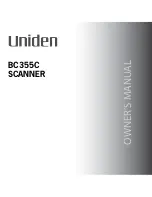
I
NFRA
S
CAN Infrascanner Model 2000 Operator Manual
INFRASCAN, INC. VERSION 1 Page 18 of 41
4.0 Theory of Operation
4.1 Basic Near Infrared Light Theory.
•
All biological tissue is, to differing extent, permeable to electromagnetic (EM)
radiation of different frequencies and intensities. This can also be considered
permeability to photons of different energy levels. This permeability to EM energy is
the basis of all imaging based on transmission/scattering characteristics such as x-
ray, CT Scan, and NIR imaging. From the principles of spectroscopy, it is also
known that different tissues absorb different wavelengths of light. The Infrascanner
is concerned with NIR imaging of the hemoglobin molecule.
•
Photons follow a characteristic path
through tissue when the source is on
the same plane as the detector. While
the light is severely attenuated due to
the scattering and absorption process,
it is encoded with the spectroscopic
signatures of the molecules
encountered en route to the detector.
By choosing the wavelengths that are
produced by the source, it is possible
to detect the relative concentration of
haemoglobin in the target tissue.
Figure 4-1 shows the simulated
diffusion path through target tissue
from source to detector.
•
The principle used in identifying
intracranial hematomas with the
Infrascanner is that extravascular blood
absorbs NIR light more than
intravascular blood. There is a greater
(usually 10-fold) concentration of
hemoglobin in an acute hematoma
than in normal brain tissue where blood
is contained within vessels. The
Infrascanner compares left and right
side of the brain in four different areas.
The absorbance of NIR light is greater
(and therefore the reflected light less)
on the side of the brain containing a
hematoma.
•
Figure 4-1: Simulated Photon Diffusion Path
Figure 4-2: Absorption of light by hemoglobin
The wavelength of 805nm is sensitive only to blood volume, not to oxygen saturation
in the blood (see Figure 4-2). The Infrascanner is placed successively in the left and
right frontal, temporal, parietal, and occipital areas of the head and the absorbance of
light at 805 nm is recorded and compared.
Summary of Contents for 2000
Page 2: ......
















































